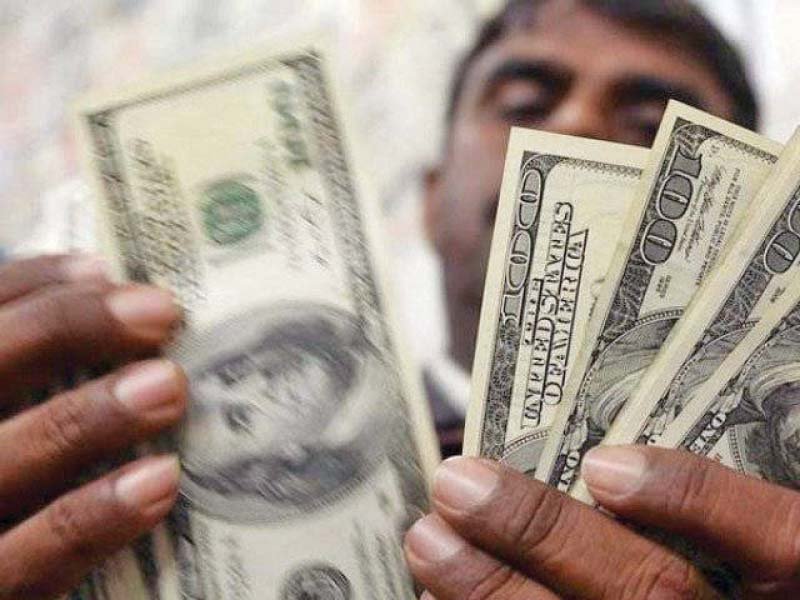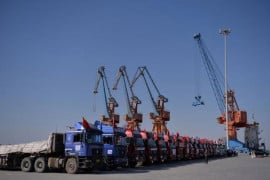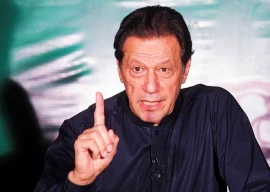
Between FY04 and FY08, the economy grew, on average, at a healthy pace of 6.26% per annum. Average fiscal deficit remained at 4.22% of gross domestic product (GDP) during that period.
Between FY09 and FY13, the economy slowed down and grew, on average, 2.82% and the average fiscal deficit stood at 6.58%. Over the past five years (FY13-18), the economy has grown, on average, 4.8% while fiscal deficit has been 5.34%.
Federal budget challenged in SC
This shows that whether the growth is high, moderate or sluggish, the fiscal deficit has been more than 4%. Fiscal deficit forces the government to borrow at home and abroad, which adds to the public debt, making debt servicing the largest component in public expenditure. The reason for the high fiscal deficit lies partly in the composition of expenditure, partly in revenue collection and partly in tax exemptions and subsidies.
For FY19, against the targeted GDP growth of 6.2%, the fiscal deficit is projected at 4.9%. In Pakistan, the actual fiscal deficit surpasses the budgetary target. The deficit target for the outgoing financial year was 4.1%, however, the year is projected to close with 5.1% deficit.
This is for two reasons – public expenditure overshoots the budgetary estimates while revenue collection falls short of budgetary targets.
The FY18 budget put the total public expenditure estimate at 21.3% of GDP, however, full-year expenditure is projected to inch up to 21.5%.
Likewise, the FY18 budget put the revenue target at 17.2% of GDP, however, revenue collection at the end of the year is projected at 16%. If the past is any guide, the FY19 fiscal deficit will also overshoot the target for similar reasons.
Dividing public spending
It is customary to bifurcate public spending into autonomous expenditure and induced expenditure. The latter changes with the change in national income or output level while the former is independent of the income or output level.
In other words, the autonomous expenditure has to be incurred regardless of whether the economy is expanding fast, slowly or even shrinking. The government has little discretion in cutting back on autonomous expenditure. This explains why the cut in overall expenditure almost always entails reduction in the induced expenditure such as development spending.
The autonomous expenditure has always had the lion’s share in total public spending. Take a look at the FY19 budget. Out of the total proposed outlay of Rs5.93 trillion, Rs2.22 trillion has been allocated for debt servicing, Rs1.1 trillion for defence, Rs463.37 billion for running civil administration, Rs342 billion for pensions and Rs477.92 billion for grants and transfers. All these are autonomous expenditures and their cumulative size is Rs4.60 trillion, which accounts for 77.63% of the total proposed expenditure. The government’s discretion with regarding to spending is confined to the remaining 22.37%.
This explains the cut in federal government’s Public Sector Development Programme (PSDP) to Rs800 billion in the FY19 budget from Rs1 trillion in the FY18 budget. The share of development expenditure (Rs1.15 trillion) in total proposed expenditure for FY19 is 19.42%.
This also includes the Rs124.70 billion allocation for the Benazir Income Support Programme (BISP), which being a cash transfer scheme should better be classified under the current expenditure.
At any rate, a developing country like Pakistan needs to allocate a higher proportion of resources to development projects to drive up the pace of economic growth. But predominantly inflexible expenditures leave little room for this.
Tax revenues
Expenditure is one side of the budget and the other side is resources, which are classified into revenue receipts and capital receipts. The capital receipts (Rs443.09 billion for FY19) are mostly debt-creating instruments and thus add to the stock of public debt. The FY19 budget targets Rs5.66 trillion in gross revenue receipts. If Rs2.59 trillion worth of provincial share is deducted, the net revenue receipts for the federal government come in at Rs3.07 trillion.
The target set for the tax revenue, out of the gross revenue target, is Rs4.88 trillion, which represents 12.88% growth (Rs558.18 billion) over the FY18 budgetary target and 17.8% growth over the FY18 revised target.
In view of a narrow base for direct taxes, which mainly come from deduction at source from wages of the salaried class, this seems to be a very ambitious target.
A narrow tax base (1.21 million taxpayers as per FBR’s Tax Directory for Tax Year 2016) together with rampant tax evasion means that even periods of relatively healthy growth are not accompanied by a corresponding increase in tax revenue.
Between FY04 and FY08 — the period of robust economic growth, the average tax-to-GDP ratio was 10.08%. Between FY09 and FY13 — the years of sluggish growth, the average tax-to-GDP ratio stood at 9.66%. Between FY14 and FY18 — the period of moderate growth, the average ratio has been 11.52%.
The constraints of the narrow tax base are also borne out by the disproportionately higher share of indirect taxes in total taxes. Out of the total Rs3.93 trillion in revised estimates for FY18, the share of direct and indirect taxes was Rs1.56 trillion (39.72%) and Rs2.37 trillion (60.28%) respectively.
For FY19, the proposed share of direct (Rs1.73 trillion) and indirect taxes (Rs2.70 trillion) in total tax revenue is 39.12% and 60.88% respectively.
Pakistan needs to watch out as CPEC-related debt soars
Indirect taxes are both inflationary and regressive in nature. When an economy is growing, the share of direct taxes in total tax revenues should go up because of increased taxable income. But this does not happen in Pakistan.
Fiscal constraints are compounded by tax exemptions or reliefs as well as export subsidies, notably for sugar, whose major beneficiaries are powerful industrial and farming groups.
The FY19 budget keeps in place the sales tax zero-rating for five export-oriented sectors — textile, leather, carpet, sports goods and surgical instruments.
The finance minister’s budget speech revealed that the government was working on a new package of export subsidies, similar to the Rs180-billion export package introduced in 2017, with a view to increasing exports.
Such packages, while having at best a small effect on bumping up export revenue, not only perpetuate a culture of lack of competitiveness, but also worsen an already skewed distribution of meagre resources.
The writer is a columnist based in Islamabad
Published in The Express Tribune, May 7th, 2018.
Like Business on Facebook, follow @TribuneBiz on Twitter to stay informed and join in the conversation.












































COMMENTS (1)
Comments are moderated and generally will be posted if they are on-topic and not abusive.
For more information, please see our Comments FAQ